| JUNE 2023 |
|
6 shows in T˘ky˘ (Kabukiza, National Theatre, Asakusa K˘kaid˘), 2 in Fukuoka (Hakataza) and 1 tour (Eastern Provinces)!
|
| Kabukiza (T˘ky˘) |  |
| Dates | 2 ~ 25 June 2023 Rokugatsu ďkabuki June Grand Kabuki |
| MatinÚe |
Keisei Hangonk˘
ďgi Jishi |
| Evening |
|
| Casting |
Living National Treasure Kataoka Nizaemon, Living National Treasure Nakamura T˘z˘, Nakamura Shikan, Nakamura Tokiz˘, Nakamura Kaishun, Nakamura Fukusuke, |
| Comments |
The 2 programs for the June Grand Kabuki at the Kabukiza.
|
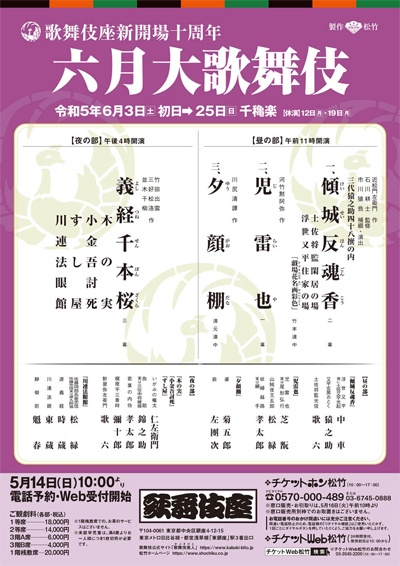 |
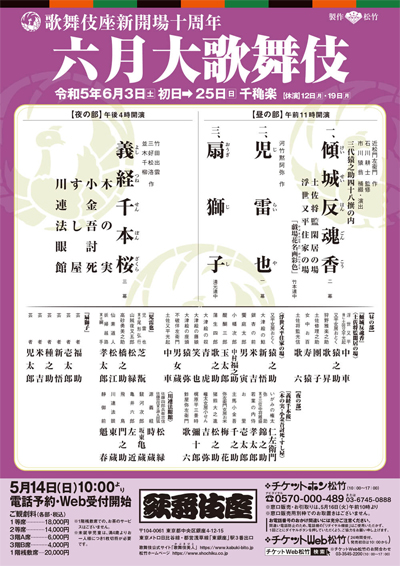 |
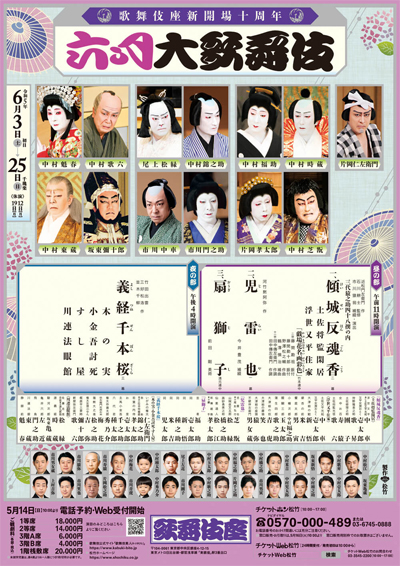 |
|
|||
| Dates | 3 ~ 19 June 2023 Rokugatsu Hakataza ďkabuki June Hakataza Grand Kabuki |
||
| MatinÚe | |||
| Evening |
|
||
| Casting |
Nakamura Jakuemon, Onoe Kikunosuke, Nakamura Ganjir˘, Kataoka Ainosuke, Band˘ Hikosabur˘, Nakamura Baishi, Kataoka Kamez˘, Ichimura Manjir˘, Nakamura Mantar˘, Nakamura Kikaku, Arashi Kitsusabur˘, Nakamura Kamenoj˘, Nakamura Jűjir˘, Ichimura Kitsutar˘, Kamimura Kichitar˘ |
||
| Comments |
The traditional two programs for the June Grand Kabuki at the Hakataza.
|
||
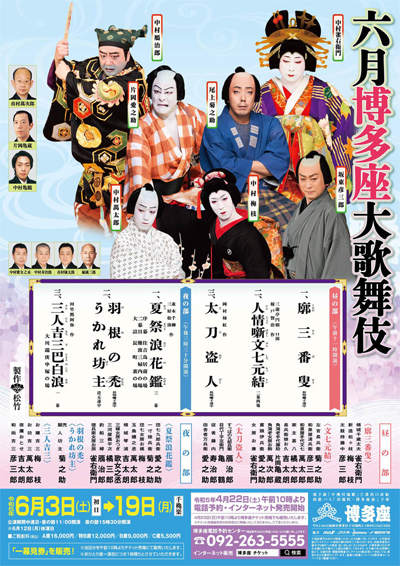 |
| National Theatre (T˘ky˘) |
| Dates | 2 ~ 24 June 2023 Rokugatsu Kabuki Kansh˘ Ky˘shitsu June Kabuki Appreciation Class |
| Program |
Kabuki no Mikata |
| Casting | |
| Comments |
Educational program at the National Theatre called Kabuki Kansh˘ Ky˘shitu ('Kabuki Appreciation Class'). This is a very interesting formula for the beginners because there is lively presentation on stage (Kabuki no Mikata) of Kabuki or some aspects of the art like music, stage tricks or fighting scenes. It is followed by one act from Chikamatsu Monzaemon's drama "Furisode Hajime". No performance the 7th and the 15th of June 2023.
|
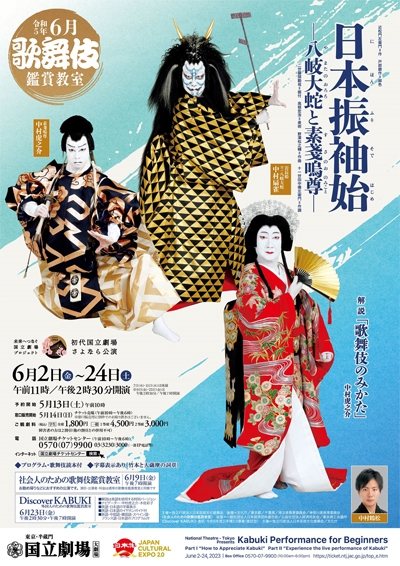 |
| Kabuki Tour in the Eastern Provinces | |
| Dates | 30 June ~ 31 July 2023 Sh˘chiku ďkabuki Higashi K˘su Sh˘chiku Grand Kabuki Eastern Course |
| Program | |
| Casting |
Onoe Sh˘roku, Band˘ Kamez˘, Nakamura Baishi, Nakamura Mantar˘, Band˘ Shingo, Onoe Sakon |
| Comments |
The Grand Kabuki Tour in the Eastern Provinces.
|
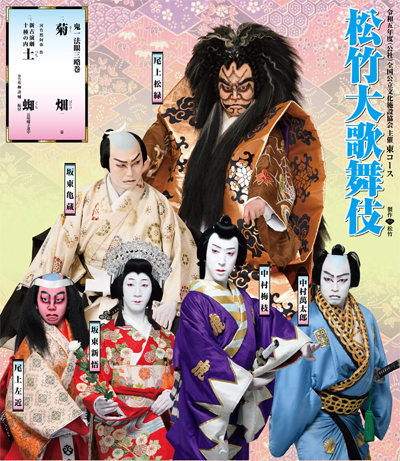 |
|
|||
| Dates | 30 June ~ 2 July 2023 Kamiyach˘ Sh˘kabuki Kamiyach˘ Little Kabuki |
||
| Program |
Goaisatsu Benten Musume Meo no Shiranami
|
||
| Casting |
Nakamura Hashinosuke, Nakamura Fukunosuke, Nakamura Utanosuke, Nakamura Baika |
||
| Comments |
1st edition of a gala for Nakamura Shikan's three sons. It is entitled Kamiyach˘ Sh˘kabuki ('Kamiyach˘ Little Kabuki'). Kamiyach˘ was the name of late Nakamura Shikan VII's neighboorhood in T˘ky˘ and it was used as an original way to appraise this great actor (kakegoe).
|
||
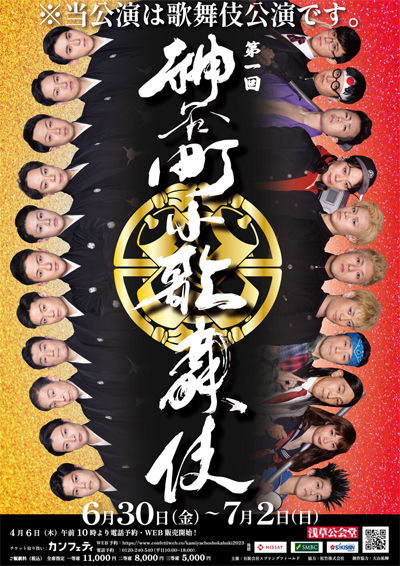 |
|
|
| Contact | Main | Top | Updates | Actors | Plays | Playwrights | Programs | Links | FAQ | Glossary | Chronology | Illustrations | Prints | Characters | Derivatives | Theaters | Coming soon | News |
